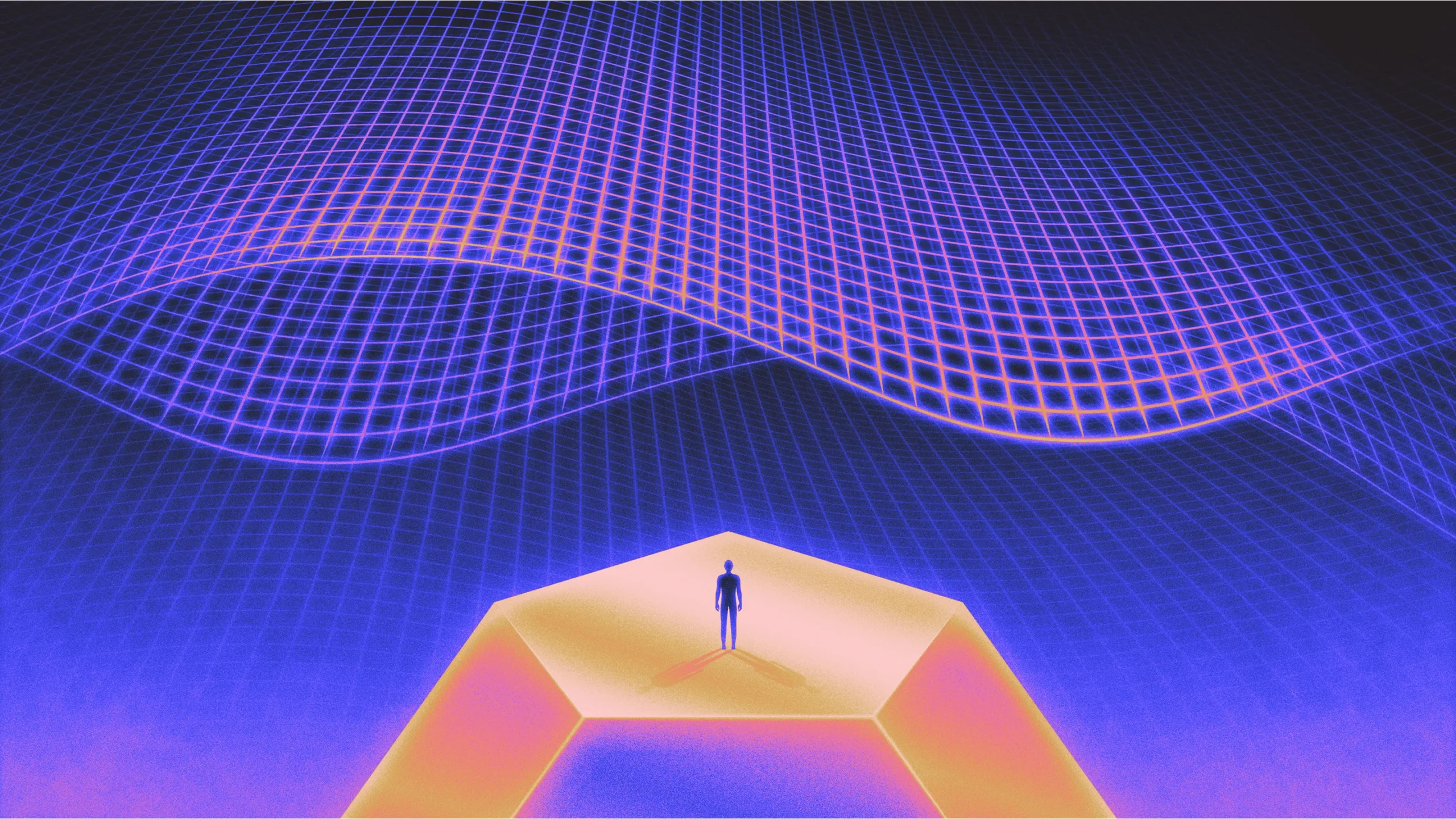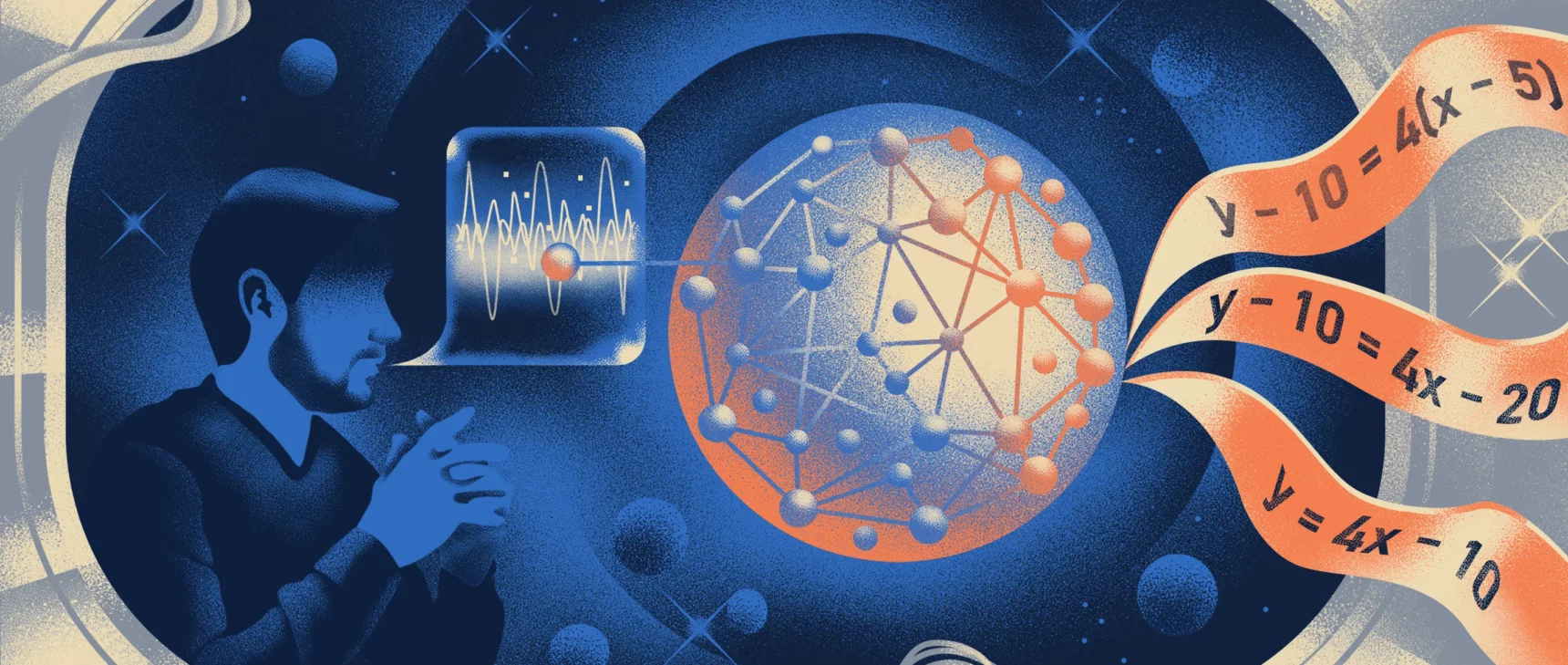Quantum Field Theory Pries Open Mathematical Puzzle

Kristina Armitage/Quanta Magazine
Introduction
Last month, Karen Vogtmann and Michael Borinsky posted a proof that there is a truckload of mathematical structure within a hitherto inaccessible mathematical world called the moduli space of graphs, which Vogtmann and a collaborator first described in the mid-1980s.
“That’s a super hard problem. It’s amazing they were able to,” said Dan Margalit, a mathematician at the Georgia Institute of Technology.
Vogtmann and Borinsky started with questions that Vogtmann, a mathematician at the University of Warwick, had been asking herself for decades. The pair then reimagined the issue in the language of physics, using techniques from quantum field theory to come up with their result.
The proof demonstrates that certain structures exist in the moduli space, but it does not explicitly reveal what those structures are. In that way, their new result is more like a metal detector than a camera — it alerts them that something interesting is hiding, even though they can’t fully describe it.
You can think of the moduli spaces of graphs as mathematical shapes with added decoration. If you stand at any point on the shape, you’ll see a graph floating above you — a collection of points, or vertices, connected by edges. At different locations on a moduli space, the graphs change, their edges shrinking or growing, and sometimes disappearing altogether. Because of these features, Borinsky, a mathematical physicist at the Swiss Federal Institute of Technology Zurich, describes moduli spaces as “a big sea of graphs.”
The “rank” of a graph is the number of loops it has; for each rank of graphs, there exists a moduli space. The size of this space grows quickly — if you fix the lengths of the graph’s edges, there are three graphs of rank 2, 15 of rank 3, 111 of rank 4, and 2,314,204,852 of rank 10. On the moduli space, these lengths can vary, introducing even more complexity.
These are examples of graphs associated with a moduli space. The rank of each graph is given by the number of loops. Mathematicians also categorize graphs by the number of vertices they have. As the rank grows, the number of possible graphs with that rank grows quickly.
Merrill Sherman/Quanta Magazine
The shape of the moduli space for graphs of a given rank is determined by relationships between the graphs. As you walk around the space, nearby graphs should be similar, and should morph smoothly into one another. But these relationships are complicated, leaving the moduli space with mathematically unsettling features, such as regions where three walls of the moduli space pass through one another.
Mathematicians can study the structure of a space or shape using objects called cohomology classes, which can help reveal how a space is put together. For instance, consider one of mathematicians’ favorite shapes, the doughnut. On the doughnut, cohomology classes are simply loops.
One can draw several different kinds of loops on the surface of the doughnut: Loop 1 encircles the doughnut’s central hole; loop 2 threads through the hole; the third “trivial” loop sits on the doughnut’s side.
A genus 1 torus, with one hole, has only two nontrivial cohomology classes, while a genus 2 torus has six.
Merrill Sherman/Quanta Magazine
A genus 1 torus, with one hole, has only two independent nontrivial cohomology classes, while a genus 2 torus has four.
Merrill Sherman/Quanta Magazine
Not all cohomology classes are created equal, however. A loop sitting on the outside of the doughnut — like the third loop — can always slide around or shrink to avoid intersecting another loop. That makes it a “trivial” cohomology class.
But loops 1 and 2 say much more about the structure of the doughnut — they only exist because of the hole. To mathematically discern the difference, you can use intersections, Margalit explained. Loops 1 and 2 can slide around on the surface of the doughnut, but unless you force them to break away from the surface altogether, they’ll always intersect each other. Because these two loops come with partners that they can’t help but cross, they are “nontrivial” cohomology classes.
Unlike with a doughnut, mathematicians can’t find cohomology classes on the moduli spaces of graphs just by drawing a picture. With such huge numbers of graphs, moduli spaces are difficult to get a handle on, said Nathalie Wahl, a mathematician at the University of Copenhagen. “Very quickly, the computer can’t help anymore,” she said. Indeed, only one odd-dimensional nontrivial cohomology class has been explicitly computed (in 11 dimensions), along with a handful of even ones.
What Vogtmann and Borinsky proved is that there are enormous numbers of cohomology classes that lie within the moduli space of graphs of a given rank — even though we can’t find them. “We know there are tons, and we know one,” Wahl said, calling the state of affairs “ridiculous.”
Instead of working with cohomology classes directly, Borinsky and Vogtmann studied a number called the Euler characteristic. This number provides a type of measurement of the moduli space. You can modify the moduli space in certain ways without changing its Euler characteristic, making the Euler characteristic more accessible than the cohomology classes themselves. And that’s what Borinsky and Vogtmann did. Instead of working with the moduli space of graphs directly, they studied the “spine” — essentially a skeleton of the overall space. The spine has the same Euler characteristic as the moduli space itself and is easier to work with. Calculating the Euler characteristic on the spine came down to counting a large collection of pairs of graphs.
Borinsky’s insight was to use techniques for counting Feynman diagrams, which are graphs that represent ways quantum particles interact. When physicists want to calculate, say, the chances that a collision between an electron and a positron will produce two photons, they need to sum over all the possible interactions that lead to that outcome. That means averaging over many Feynman diagrams, motivating clever counting strategies.
“I realized that one can formulate this kind of problem as sort of a toy quantum field theory universe,” Borinsky explained.
Borinsky imagined the graphs as representing physical systems in a simple version of the universe, one in which, among other assumptions, there’s only one type of particle. The quantum field theory framework needed some adjustment for Borinsky and Vogtmann to get the right count. For instance, in quantum field theory, two graphs that are mirror images of each other are indistinguishable, Borinsky said. Formulas for adding up Feynman diagrams include factors that ensure these graphs aren’t overcounted. But when it comes to calculating the Euler characteristic, those graphs are considered different. “We have to play a little game with the symmetries of the graphs,” Borinsky said.
With some programming help from the physicist Jos Vermaseren, Borinsky and Vogtmann finally overcame this difficulty. In their January paper, they proved that the Euler characteristic of the moduli space of graphs of rank n gets massively negative as n gets bigger. This implies that there are many, many nontrivial cohomology classes to be uncovered within each moduli space.
Though Borinsky and Vogtmann’s paper contains no further hints about these cohomology classes, it’s an encouraging result for researchers who seek to find them — and perhaps it adds to the thrill of the hunt. Said Margalit of the cohomology classes: “These ones we know are just these gems. And every time we find one, it’s this beautiful thing.”
Correction: February 23, 2023
An earlier version of a graphic accompanying this article labeled six nontrivial loops of the genus 2 torus, but only four of these loops are independent. The graphic and its caption have been updated.



